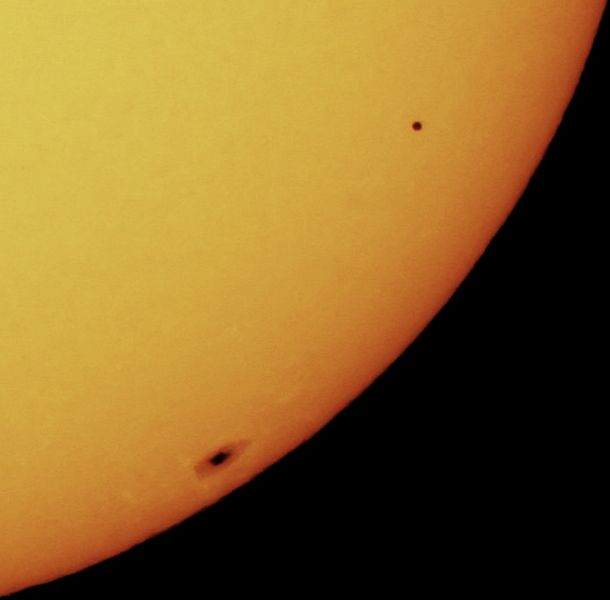The Journal Science has published a special issue this week presenting the first 90 days of the MESSENGER probe's observations of the planet Mercury. The densest planet in the Solar System, Mercury is the only terrestial planet other than the Earth to have a strong magnetic field. Moreover, its surface is believed to offer a unique window on the early Solar System, because it has been geologically dead for at least 3.5 billion years, while the other planets have undergone subsequent volcanism, re-surfacing events and weathering. However, to date this enigmatic planet has proved difficult to study because it is so close to the Sun.
The densest planet in the Solar System, Mercury is the only terrestial planet other than the Earth to have a strong magnetic field. Moreover, its surface is believed to offer a unique window on the early Solar System, because it has been geologically dead for at least 3.5 billion years, while the other planets have undergone subsequent volcanism, re-surfacing events and weathering. However, to date this enigmatic planet has proved difficult to study because it is so close to the Sun.
It's still very early days in the analysis of data from MESSENGER, which only arrived in orbit around Mercury in March, and so what we're seeing at the moment are a number of strands of evidence, which still need to be interpreted, but which will feed into models of Mercury's formation in coming months. But those strands are quite tantilising. For example, the first measurements of Mercury's surface composition are quite a contrast to the compositions of the other terrestial planets -- high in sulphur and magnesium, but low in aluminium and calcium. That's a much closer match to the composition of comets: does it suggest that Mercury's surface may be littered with dust from comets? Particularly interesting is a high abundance of potassium, which is relatively volatile: its survival in Mercury's crust rules out any violent formation models in which Mercury would have been very hot at any point in the past.
Measurements of Mercury's magnetic field have shown a similar field pattern to the Earth's but displaced towards the north pole, so that the equator of Mercury's magnetic field is around 500 km north of its centre. MESSENGER has detected solar wind particles trapped within that magnetic field, and the surprise here was that the particles come in very short sharp bursts, typically lasting only a few seconds. This contrasts with solar wind particles in the Earth's magnetosphere, which become trapped for long periods in regions called the Van Allen belts, leading to a smooth and steady flow of particles. This suggests that Mercury's magnetic field is not strong enough to trap particles in the long term, and is much more exposed to the gustiness of the solar wind.
Finally, there have been some surprises among the features seen on Mercury's surface. Shallow irregular indentations seem to be common on the floors of craters. The mostly likely way that these might form is by the evaporation of sub-surface volatiles when new craters are formed, which might be expected as previously buried rock is exposed to the Sun's heat for the first time. This appears to be another indication that volatile materials are quite abundant on Mercury, apparently ruling out a hot and violent formation models.
The next step will be to feed these observations into more detailed models for Mercury's formation, and it will be interesting to see how these develop in the next few months.
- Previous Where Earth got its water
- Next Designer plastics










Comments
Add a comment